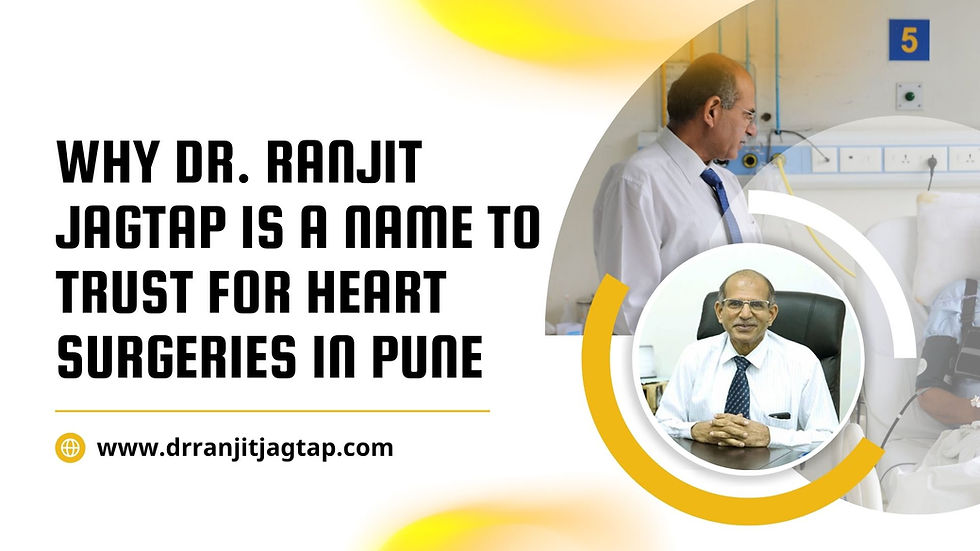Dr Ranjit Jagtap News: What is Radial Artery Intervention, and how does it work?
- drranjitjagdap
- Apr 11, 2022
- 3 min read
Coronary artery disease is a disorder in which blood flow in the arteries supplying blood to the heart is obstructed. It can lead to a heart attack if not treated. It's a common heart problem that also happens to be one of the major causes of death. As a result, it is critical to diagnose and treat coronary artery disease as soon as feasible. If somebody suspects symptoms of coronary artery disease, the first step should be to see a cardiologist in Pune.
According to Dr Ranjit jagtap News, a full-fledged operation, such as open-heart surgery, was once required to clear a clogged artery in the heart. Interventional techniques, on the other hand, can now treat coronary artery disease and unblock blocked arteries with minimal intervention.

What is Radial Artery Intervention, and how does it work?
According to Dr Ranjit Jagtap, cardiothoracic surgeon, Ram Mangal Heart Foundation, angiography and heart artery interventions such as stenting can now be performed using the radial artery. The radial artery, which is also the artery through which you can feel the pulse, feeds blood to the hand. Angiography through the radial artery has a number of advantages, including a faster recovery time and less bleeding.
The radial artery is located in the wrist and serves as a catheter entry site. A radial artery intervention takes place by threading a thin catheter through the body's network of arteries. The catheter through the radial artery leads to the heart. Transradial access, or the transradial approach, is another name for this surgery.
Radial Artery Advantages in Heart Interventions
Radial artery access, on the other hand, is becoming more popular due to its several advantages, including:
1.Reduce bleeding problems
In circumstances where a patient is at high risk of bleeding issues, radial artery intervention has proven to be beneficial. It's especially useful if you have a 'hostile' groyne due to infections, peripheral artery disease, or morbid obesity. Because the radial artery has a significantly smaller diameter than the femoral artery, haemostasis after transradial surgeries is simple to achieve. The first stage of any wound's healing is haemostasis. It is the procedure that stops bleeding and maintains blood contained within a broken blood artery. The majority of percutaneous coronary procedures causes less bleeding, which leads to fewer vascular surgical problems (PCIs).
2.Early mobilisation and discharge allows for a faster recovery
One significant advantage of radial artery access over femoral access is the patient's speedy mobilisation and discharge from the hospital. When compared to the femoral artery approach, the hospital stay was much shorter in the case of transradial diagnostic coronary angiography, according to numerous investigations. Many patients' lives have been revolutionised by the discovery of percutaneous methods to diagnose and treat coronary artery disease. In fact, after a successful radial artery surgery, patients do not need to lie still and can leave for their home the same day. It's a day-case PCI that has a lot of advantages versus femoral intervention.
3.Survival and better outcomes
It is critical to open the blocked heart artery as quickly as possible in heart attack victims, ideally within 90 minutes of arrival at the heart hospital. Because access to the heart is important, patients have strong blood thinners before the procedure, and have access via the leg artery can result in thigh haemorrhage that is difficult to manage.
Conclusion
Radial artery has significant advantages such as rapid patient mobilization, day care procedures, low-cost and offer better survival. At Dr Ranjit Jagtap Clinic, they have an experienced team of cardiologists that have years of experience in performing radial artery intervention. It is an excellent alternative to angiography that gives better outcomes





Comments